In this article, you’ll learn how to fully optimize your website for technical SEO to meet the search engine requirements so you can improve your search visibility, traffic, conversions, UX, core web vitals, and much more.
So whether you are starting a new website or already have started, this step-by-step tutorial will help you to optimize your technical SEO even if you are not a techie person.
However, let’s get started with the basics.
What is Technical SEO?
Technical SEO refers to a process of improving technical aspects on your websites such as the crawlability and user experience to meet search engines technical requirements in order to improve search visibility and traffic of a webpage from search engine result pages (SERPs), User Experience, reduce CPC and improve conversion rates.
Technical SEO is a part of the overall SEO strategy for B2B or B2C.

And here you will be focusing on improving the infrastructure of your website such as:
- Crawling
- Indexing
- Page speed
- Responsiveness
- Rendering
- Website architecture
- Content Inventory and so much more
Why is technical SEO important?
Technical SEO is the first thing you should implement before you do anything on your website, and you need to have your technical SEO up to game otherwise even the best quality content will not rank in search engine result pages (SERPs) and it’s the first part of SEO pyramid.
And this means you need to help search engines to find, crawl, render and index your web pages, especially at the beginning when you don’t have any external links coming to your web page.

Search engines like Google are using mainly external and internal links to discover your website and the internet. However, if you don’t have any external links, then you must help search engines to find your content, especially for the new website, and newly published web pages.
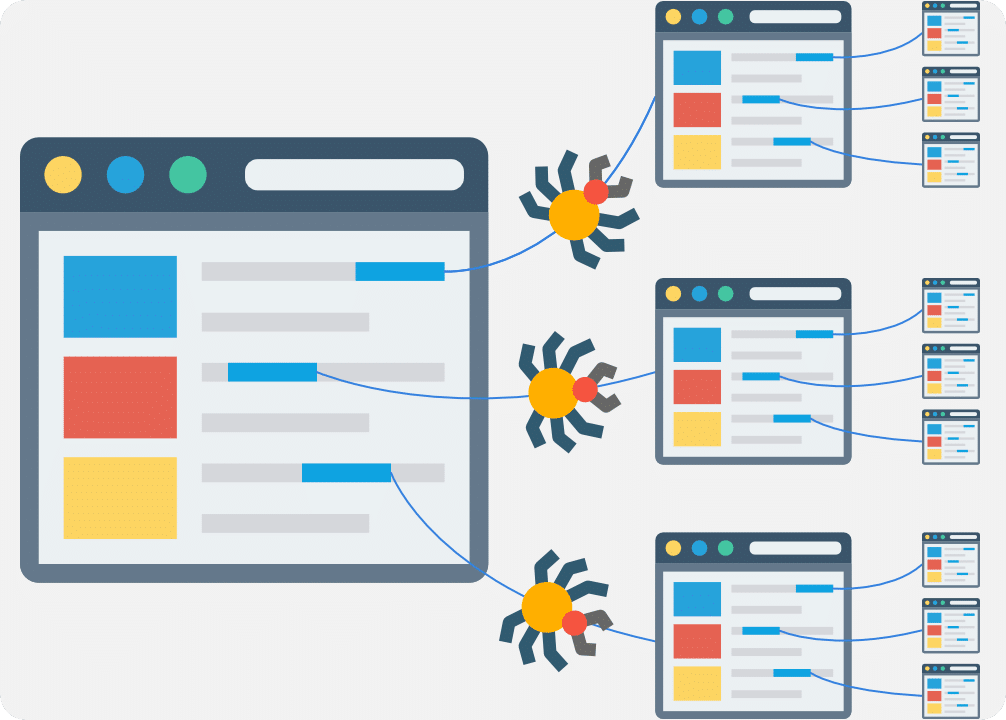
However, that is the basic. Technical SEO also helps your website to meet the technical requirements of search engines such as the website speed, responsiveness, security, not duplicated content, and many more technical aspects that we will go through how you can fix them.

And all these and more technical SEO aspects of your website are important for your website because they will help to improve your ranking, search visibility, traffic to your website, conversion rates, and overall user experience (UX).
Also, in some cases, if you do not meet the most important search engines criteria then some or all your web pages can be removed from SERPs.
Therefore, it is in your best interest to optimize your technical SEO in the best possible way, and in today’s article, I am here to help you get your technical SEO up to search engine standards to maximize your website potential and drive the highest number of traffic and get the best ranking.
So with that in mind let’s move to the first step of the technical SEO.
Step #1: Enable Crawling and Indexing
The first and essential step that you must conduct for your website is to help search engines to discover your content and then crawl and index it.
Implement Sitemap
The first thing you should implement for your website is a sitemap.
A sitemap is a file where you provide information about the pages, pictures, videos, and other files to help search engines discover, crawl, and index it. Or when you update your content it gives a hint that search engines should check it out again. It also can help you find all pages on a website.
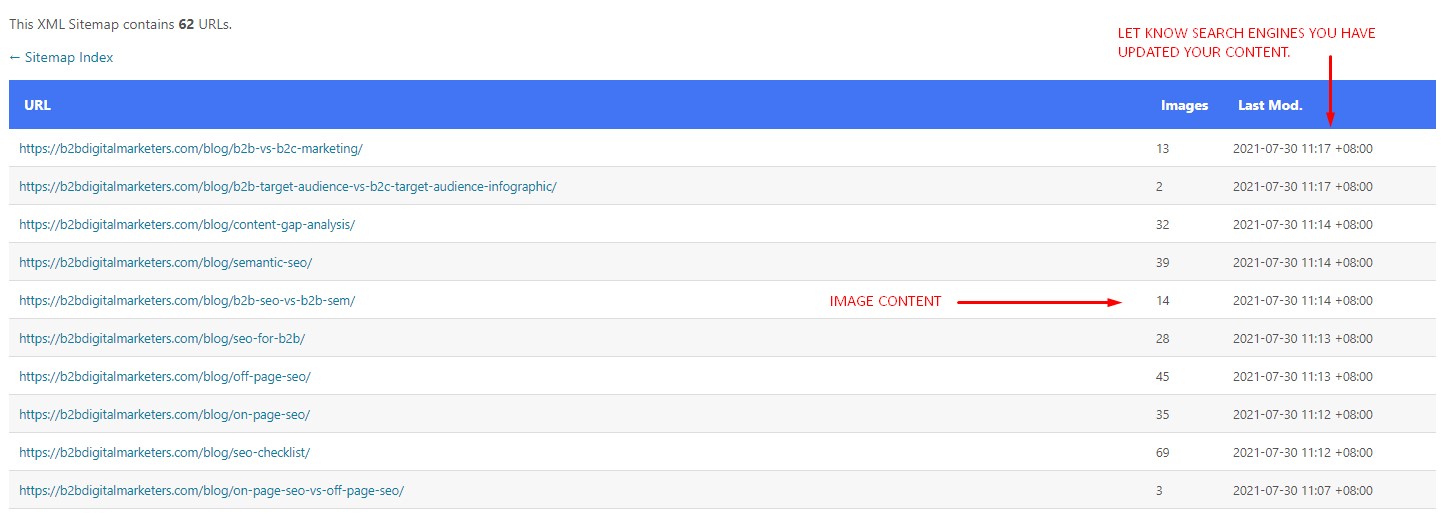
Luckily if you are using popular CMS systems like WordPress, they provide basic sitemaps without using any plugins. However, I do recommend using SEO plugins like Rank Math that helps you set up and control your sitemap indexing.
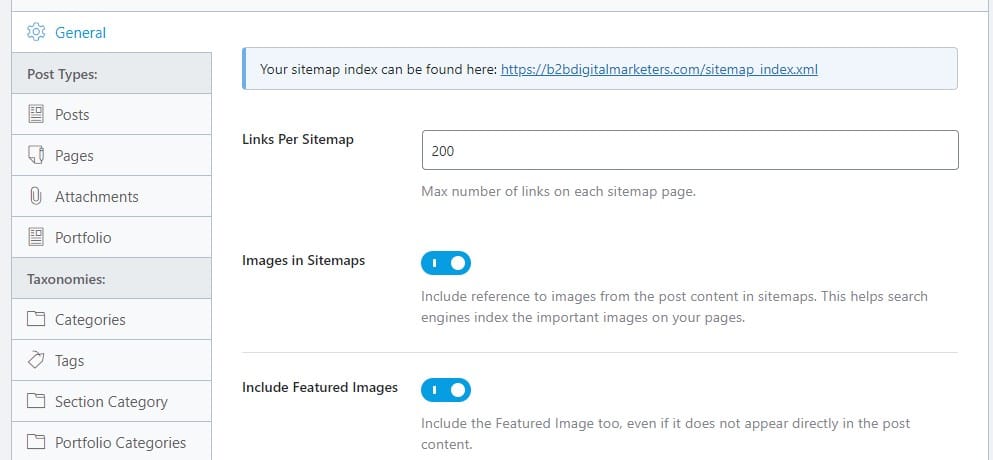
However, if your CMS system does not create a sitemap for you and you don’t have the option to install a plugin, then you can use third-party tools. For example, an SEO tool like SE Ranking will help you to create a sitemap for you that you can just upload to your website.
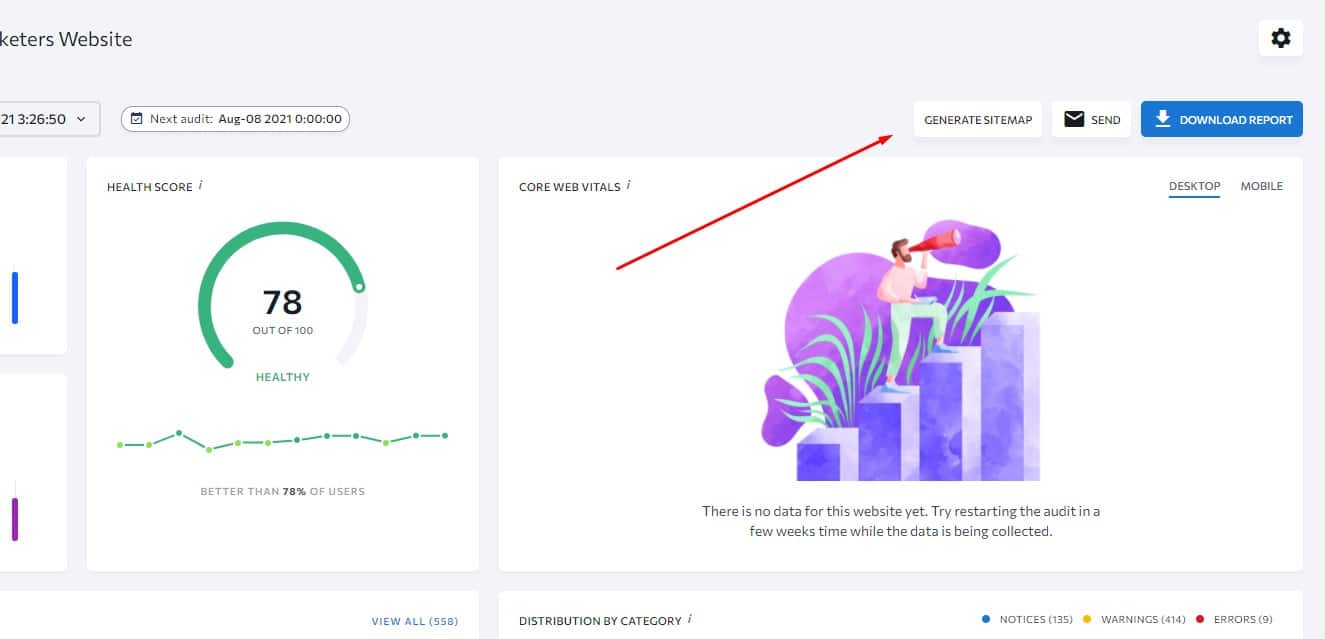
Also, there are free third-party tools that you can use to create a sitemap for your website as well.
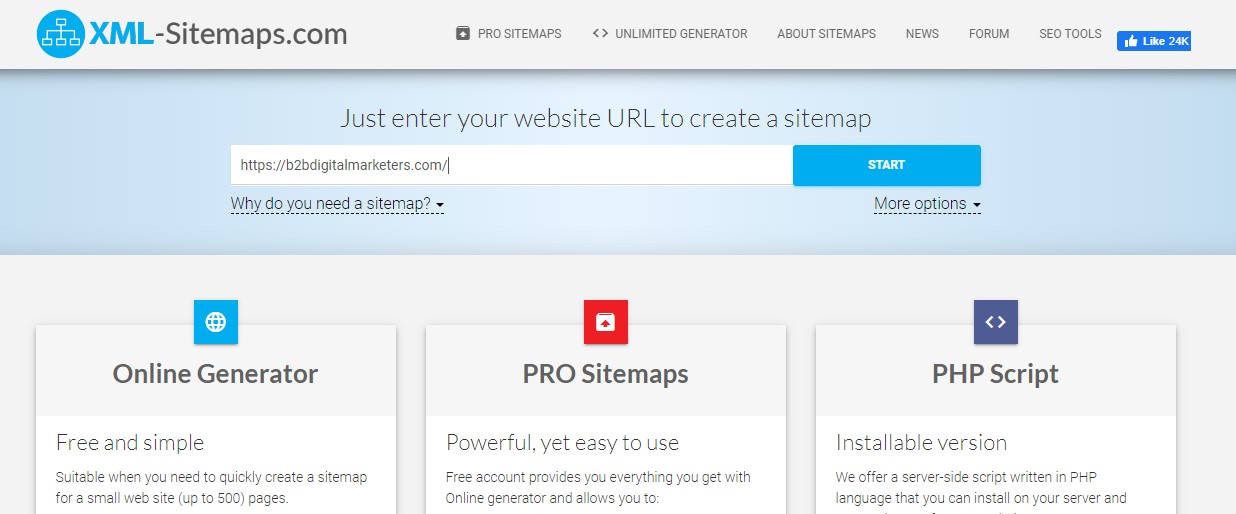
Register for Webmaster Tools
Once you have your sitemap then you need to submit it to search engines or to their webmaster tools services. I recommend you register for Google Search Console, and Bing Webmaster Tools.
Webmaster tools are not only important for your technical SEO, but they are having numerous benefits and often they are one of the top priorities on almost any SEO checklist you find.
So, once you are done you can submit your sitemap in their webmaster tools.

And what’s also important is that Google is introducing Core Web Vitals that are already part of their ranking algorithms and probably other search engines will follow too.
Therefore, they will give you Core web vital reports about your website and what you should improve to meet their thresholds.

They also give you more information about your mobile page experience once you hit sufficient mobile traffic so they can generate the report.
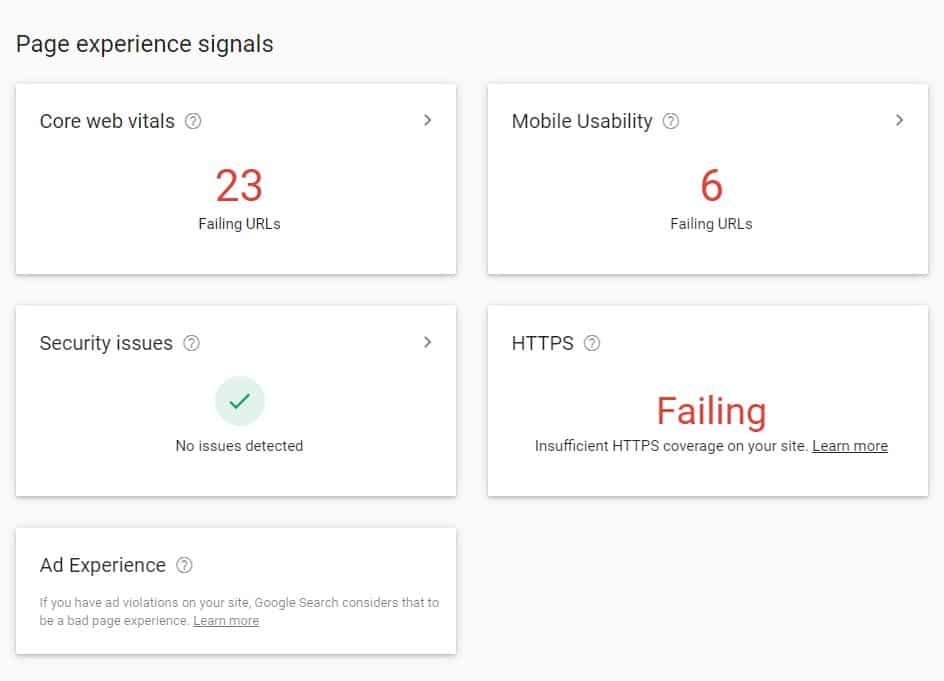
And lastly what I want to mention is you can also see your “Coverage” report in Google Search Console that works as a site audit for your website displaying issues on your website.

All these tools help you to look out for any issues that can harm your website ranking. Any issues displayed in Google Search Console should be your priority to fix as soon as possible before your ranking starts to decline.
Run Website Audit
The next important part of step one is to run a regular website audit to spot any issues on your website before it harms your ranking and search visibility.
Luckily, there are plenty of tools you can use to run website audits for your website and some are cheaper and some more expensive.
My favorite is SE Ranking Website Audit tool as it helps both professionals and users with little to no experience in SEO. Within minutes, the tool can scan a website of any volume and build a detailed report on its technical health and display your overall technical SEO health score.
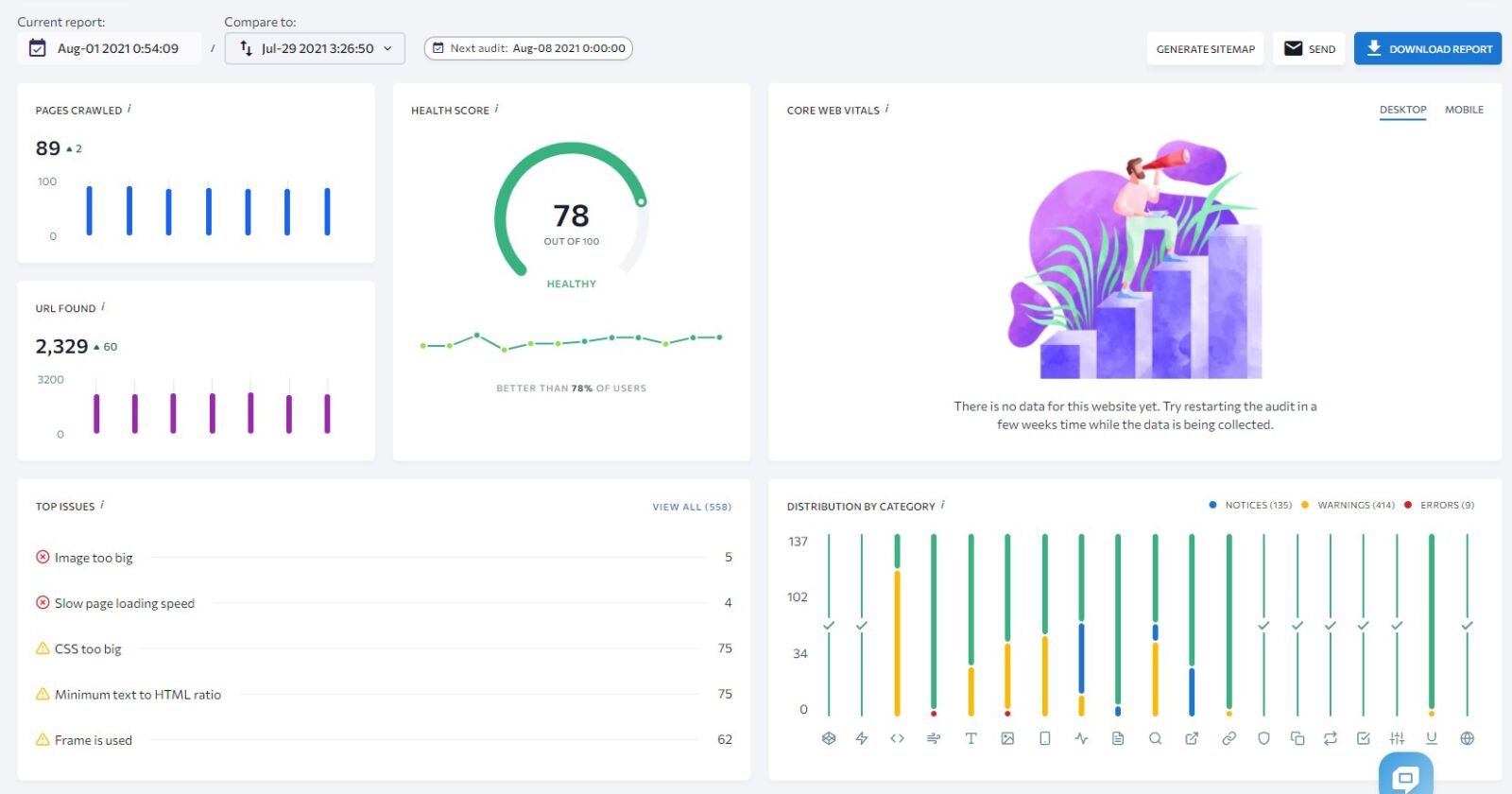
Their website audit checks every page of the website against 110 parameters that impact SEO. Website Audit will reveal if your site has any issues with:
- SSL certificates and mixed content
- Core Web Vitals metrics and website speed
- Noindex/nofollow instructions and the robots.txt file
- HTTP status codes and redirects
- Canonical and hreflang attributes
- Internal and external links
- JavaScript and CSS files and many more
So, if you are dealing with any SEO issue such as declining website traffic, lower impressions, or seeing your SEO results are getting worse, then going through your website audit will help you to figure out what’s wrong with your website and fix it.

Having an SEO tool, that regularly check for any technical and other SEO issues is essential for your website and one of the most important investments you can make to keep healthy and steady growth of your website results.
Step #2: Optimize for User Experience
The second step is to optimize your website for a unifying user experience (UX).
These factors I am going to mention are not less important and search engines like Google put high weight on these when they are assessing your website for ranking.
Therefore, make sure you also implement these technical SEO factors for your website.
Protect Your Site with SSL
First and foremost using an SSL certificate for your website is a ranking signal and if you are not using an SSL certificate, then you should get one very quickly before you get blacklisted.
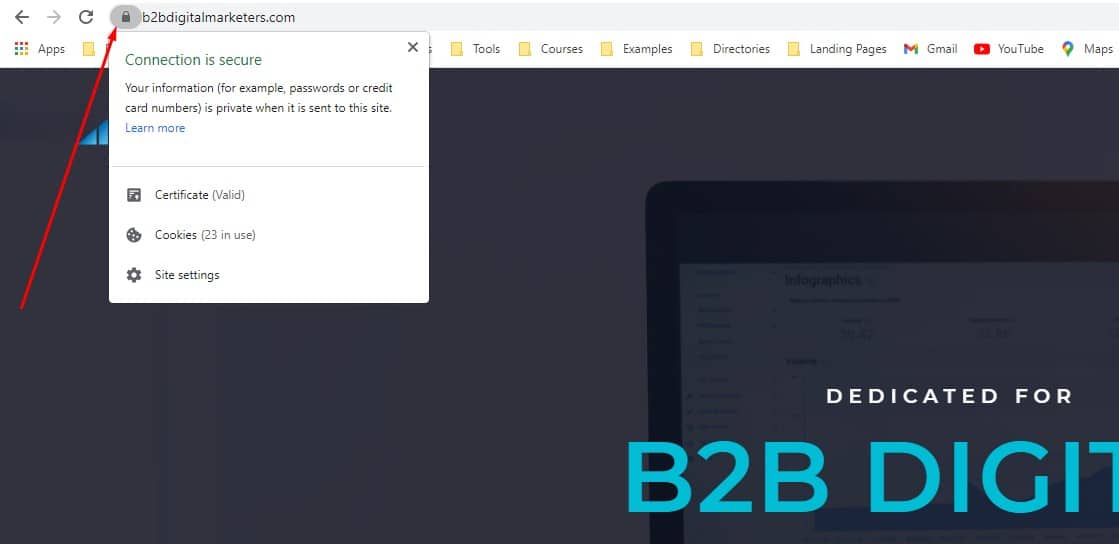
As said on the Google website:
“Security is a top priority at Google. We are investing and working to make sure that our sites and services provide modern HTTPS by default.”
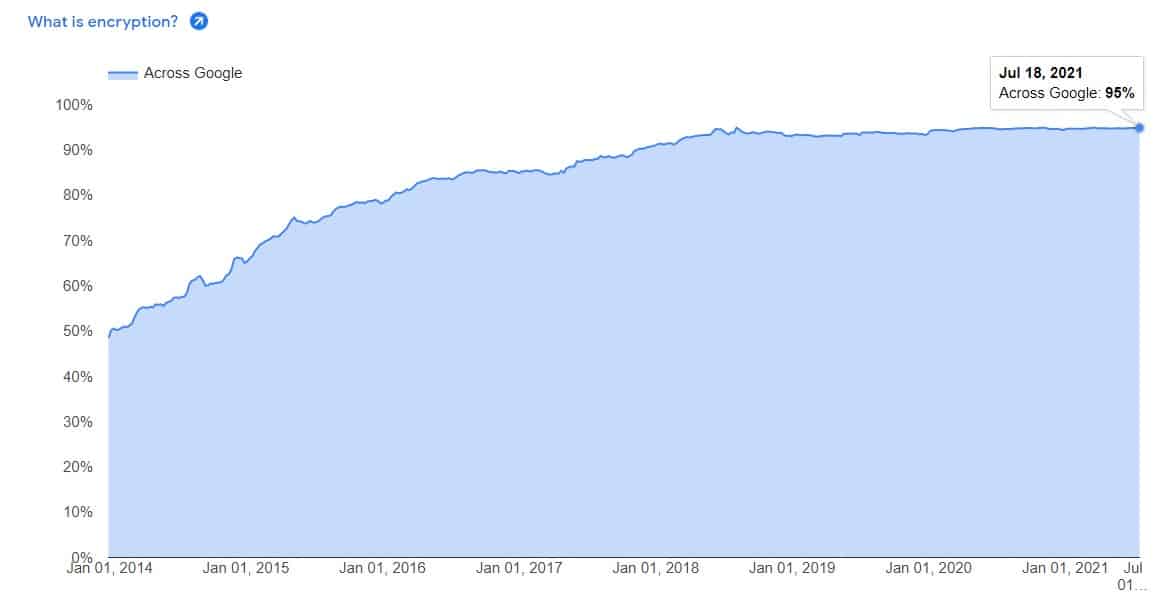
Google wants to protect its users from spammy and dangerous websites. Google Safe Browsing technology identifies unsafe websites across the web and notifies users and webmasters of potential harm.

Luckily, if you purchase a domain or a hosting often SSL certification comes with the domain for free for the first year or so, and then you can renew it with the hosting or third-party tools.
SSL certificate helps search engines to authenticate the person or a company that runs the website and enable data encryption to protect both the user so the website owner. (Check out HostGator best alternatives)
Be Mobile-Friendly Website
The next important technical SEO aspect is a Mobile-Friendly website.
According to HubSpot, Mobile performance is the Top technical SEO aspect for marketers to improve site performance.
And it is no wonder as mobile devices now drive over 52% of web traffic and account for nearly two out of every three minutes online and in both B2B and B2C industries, website owners and marketers have seen massive improvements in SEO results once they optimized their website for mobile traffic.
Luckily, to have a mobile-friendly website you don’t need to be a website developer or expert in coding as most of the heavy lifting is done by the theme developers.
Just pick up a mobile-friendly theme for your CMS and you are ready to rock. For example, my favorite mobile-friendly themes for WordPress are Elementor, Avada, and Divi.
You can also test if your website theme is mobile-friendly by using the Google Mobile-Friendly test. Just pop in your URL and get results for any of your webpage.

Step #3: Optimize for Page Speed and Core Web Vitals
Page speed is arguably one hottest topic in the SEO world that everybody is talking about. Since Google introduced using page speed in mobile search ranking as a ranking factor in 2018 and mobile-first indexing in July 2019, everybody knew that page speed will affect websites’ ranking.
Later on, Google also introduces Core Web Vitals in May 2020 which are user experience metrics used to evaluate your website page speed performance and other important technical aspects such as website security.

So with that let’s have a look at how you can improve your page speed and core web vitals
Use CDN (Content Delivery Network)
The first and one of the most important technical SEO aspects to fix your page speed and core web vitals score is to use a content delivery network (CDN).
Implementing CDN is like having multiple servers across the world for your website and then serve your content from a server that is closed to a user to minimize the distance. It does it by scanning your website and making a copy of all of your web pages and then distributing it across the planet making it more accessible.
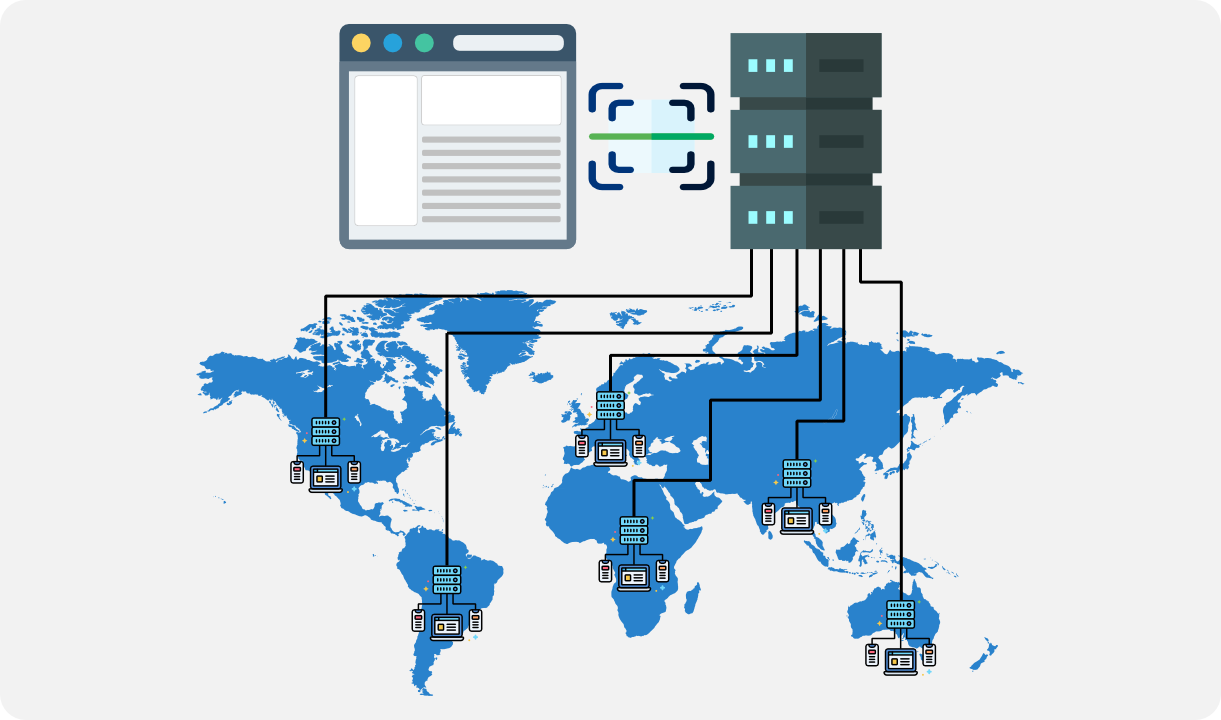
It also reduces the Webhosting bandwidth consumption by reducing the amount of data the origin server must provide, thus reducing hosting costs for website owners.
CDN vendors like Cloudflare provide a feature that will serve a limited copy of your cached website to keep it online for your visitors in case your server went offline.
On top of that CDN improves the security of your website making it harder to hack your website and we both know that Google likes that.
Use Caching Plugin
The next essential part of the Technical SEO is to use Caching plugin especially if you are using the WordPress system.
Caching plugin helps you to dramatically speed up your website by using some of the technologies such as:
- Compressing website pages
- Cache preloading
- File Optimization
- CDN optimization
- Lazy load set up and much more
Caching plugin is a must for your website to increase page speed and your core web vitals score. Also, it will help you with other technical SEO aspects we are going to talk about later.
Implement Lazy Loading
Another important aspect to improve page speed and core web vitals is to implement lazy load for images, videos, and other media on your website.
Lazy load allows loading images only when a user scrolls down the page, thus it helps you to improve your:
- Site performance
- Reduce bandwidth limit
- Optimize LCP score
- Improve Your overall Technical SEO

(Source)
A lazy load is especially important if you are utilizing a lot of media on your web page. For example, my typical blog posts contain over 30+ images, therefore, it is a must to implement a lazy load for me.

Do Image Optimization for Technical SEO
Another way to optimize your images for technical SEO is to use compression and CDN (content delivery network) for images.
Most often the largest elements on a website are images. So, it’s super important to optimize them because it can reduce the page load time massively and increase the page speed score, thus improving UX, LCP score, and your website ranking.
So to compress your pictures you can use online sites like TinyJPG.com or TinyPNG or if you are using popular CMS like WordPress, then you can install some of the Image plugins such as ShortPixels that helps you to compress images, set the right dimensions, and serve images from CDN.
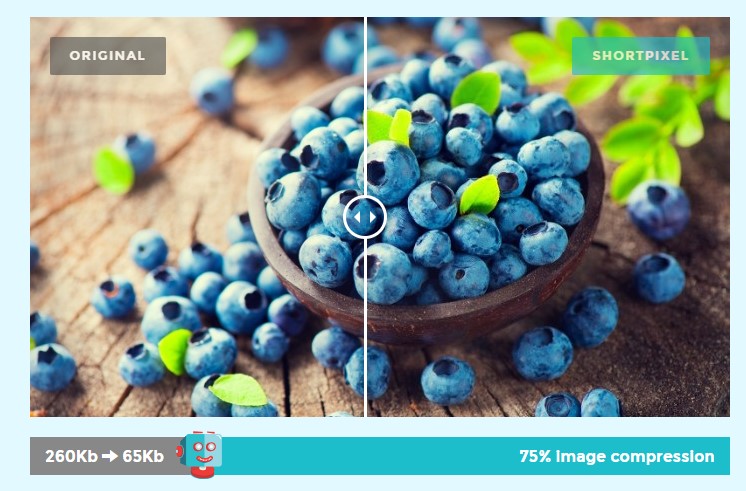
So these are some of the ways to improve your page speed and core web vitals score, of course, there are many more things you can do, such as reduce the size of your web pages, opt-in for better hosting, or invest in a professional theme for your CMS.
However, if you are not a techie person, then these technical SEO tips should get you going and improve your page speed significantly.
Step #4: Help Search Engines with SEO
Step #4 is all about helping search engines to understand your content, what it is about and what are the most important pages on your website that you want to rank high in search engines.
Everything we did until now was mostly focusing on the back-end part of your technical SEO and website to ensure everything is up and ready to receive traffic to your website.
So now we will be focusing on the technical SEO part that is mostly focused on your content and how it is structured to help search engines to crawl that content more efficiently, and to better understand what’s your content about.
So, let’s dive right in!
Implement SEO Site Architecture
One of the most important technical SEO aspects for your content and overall website is SEO-friendly site architecture.
Website architecture is the foundation of your SEO and unfortunately, many website owners do not spend enough time to plan and layout SEO-friendly site architecture.
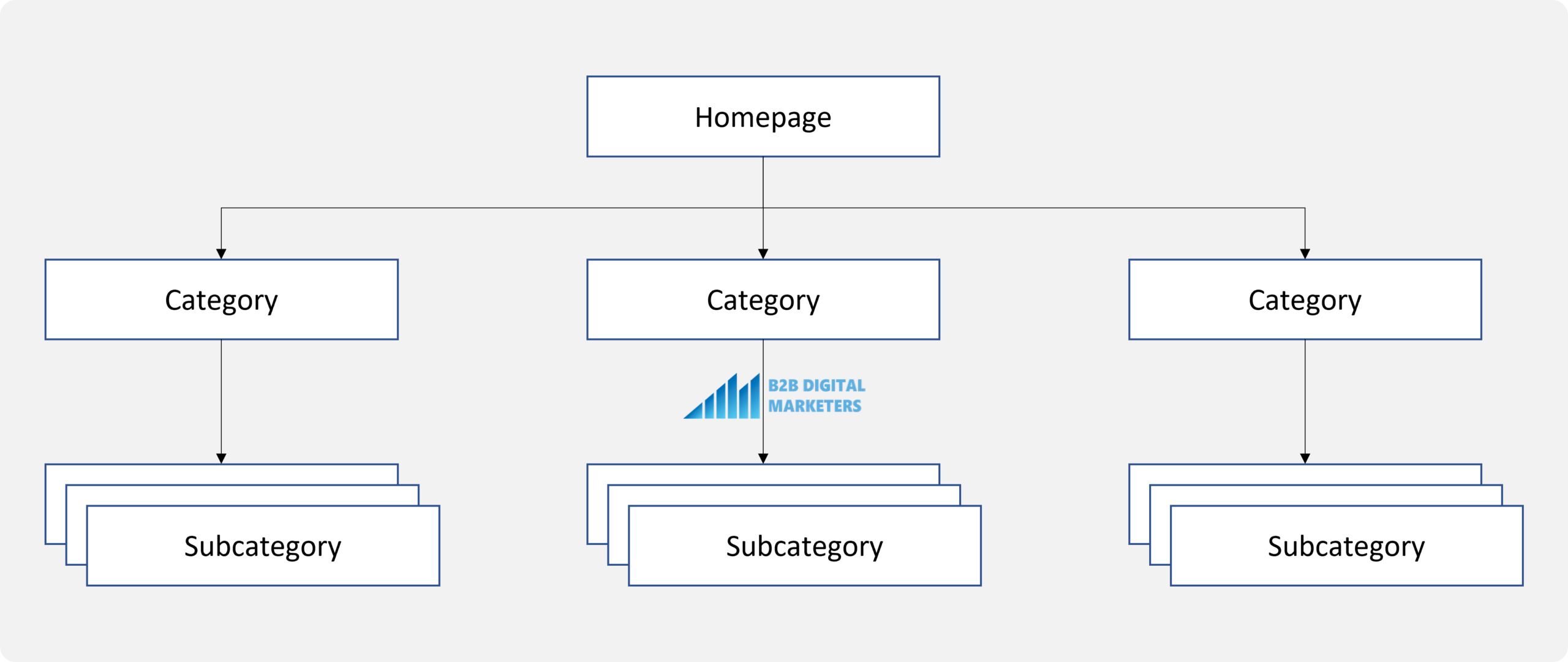
However, properly planned website architecture helps search engines efficiently crawl your website, understand the relationship between the pages and their content and determine which pages are the most important for you. Here is an example of an SEO friendly website architecture:

And likewise, website architecture helps users to navigate your website more effectively and find the information they are searching resulting in boost user retention, time on a website, and conversion rates.
Therefore, as a rule of thumb, try to have your most important pages with crawl depth below 3 as any pages above 3 generally perform poorer in search engine results pages as search engines assume they are less important.
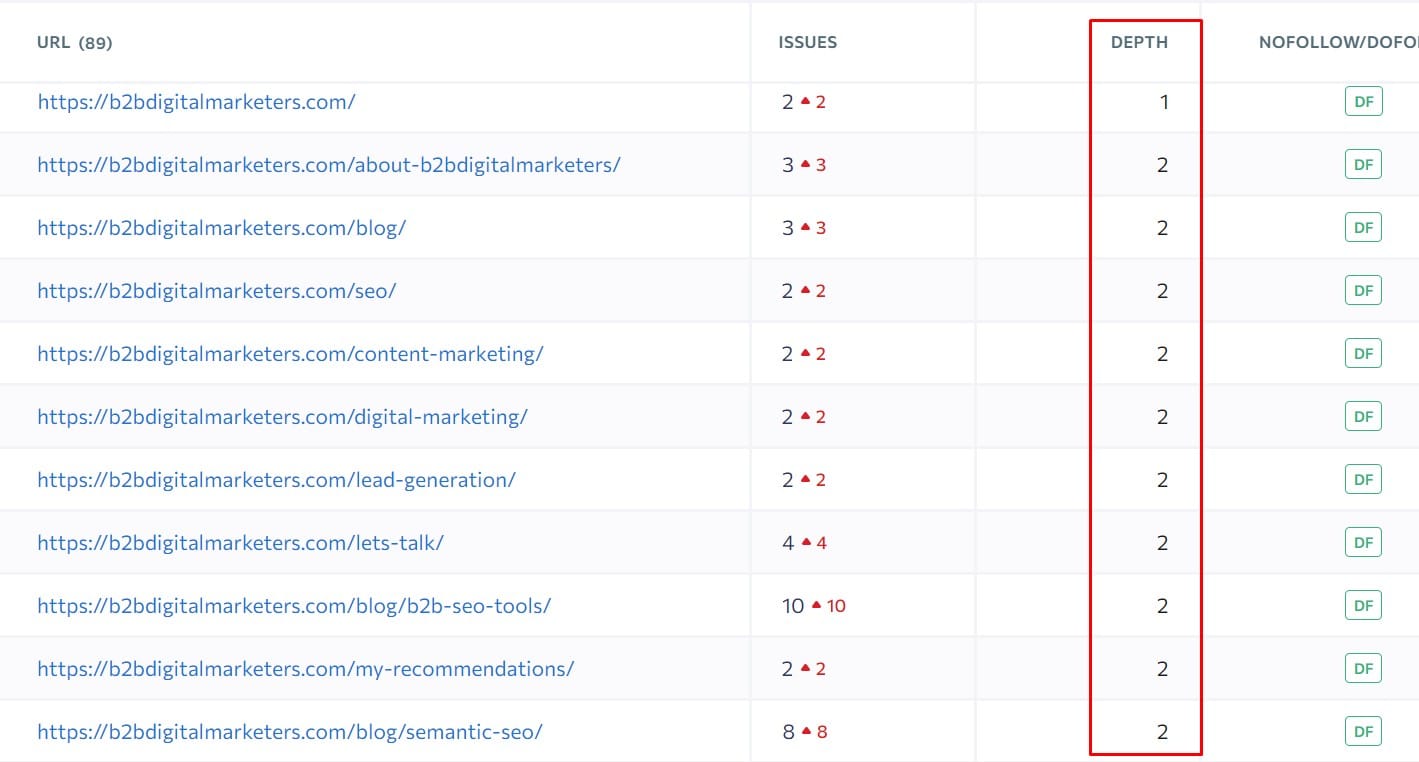
Implement Internal Linking Strategy
The next important part of your technical SEO is the internal linking strategy.
Internal linking strategy is crucial for your SEO to improve the ranking of your most important pages as Google is using internal links to better understand what your content is about.
You can also use internal links to spread a link juice from pages that get a lot of backlinks to pages with a small number of backlinks. (Check out Cross linking in SEO)
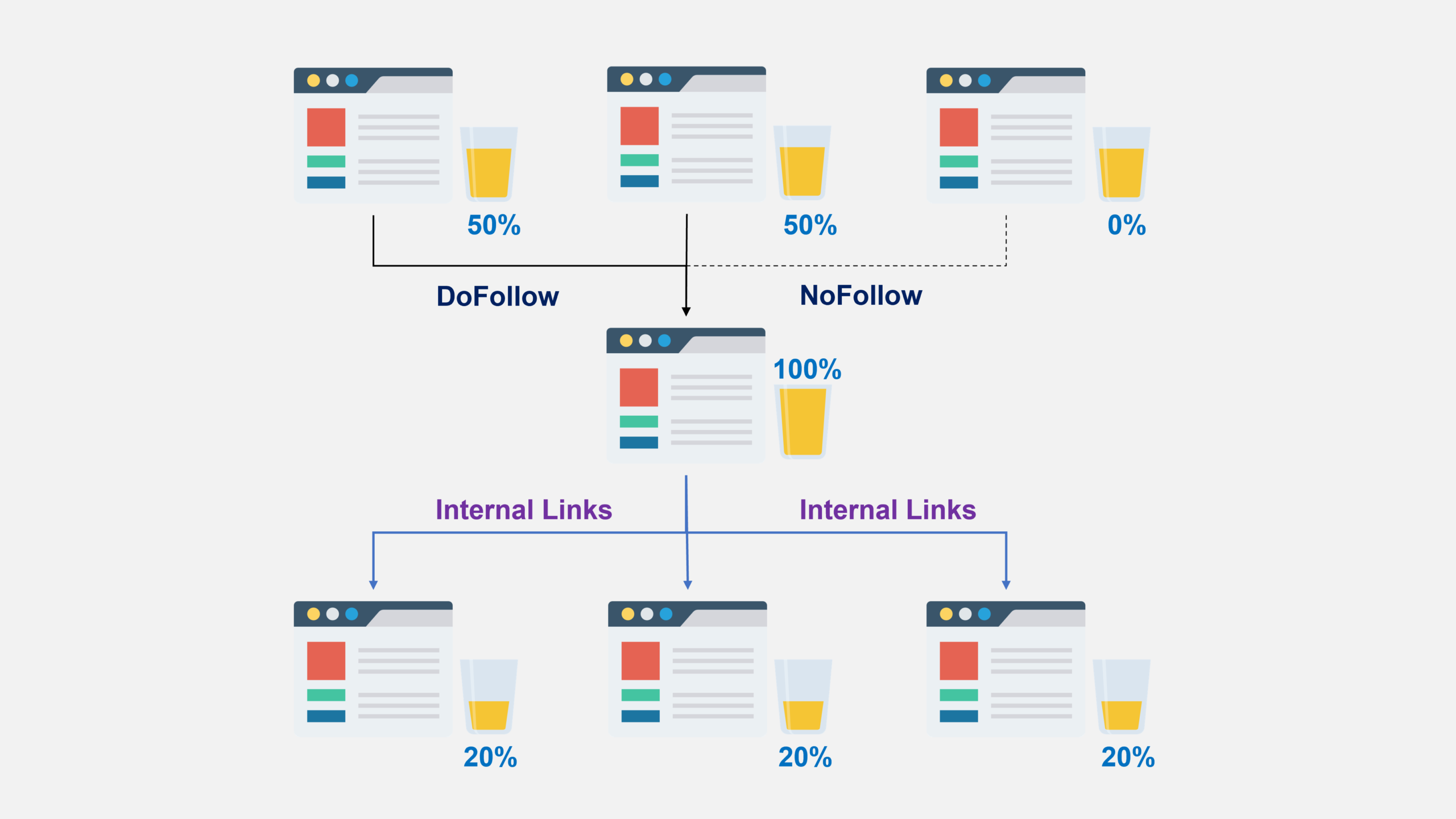
That’s why it is important to strategically place your internal links within your navigation menu, footer, and your blog posts.
For example, let’s say I have a new blog post coming up and I want to boost the authority of the blog posts when I publish them. So, I can open up my SEO tool and check my backlink report.

Now, to get the boost for my new blog posts I can put an internal link from one of these pages. However, it needs to make sense within the context, and I cannot just shovel the link there.
A great way to boost your blog post’s authority is often to put it on your homepage. Like this, your new blog post will get a ton of link juice as often homepages generate plenty of backlinks and it will give a clear signal to Google that this page is important to you.
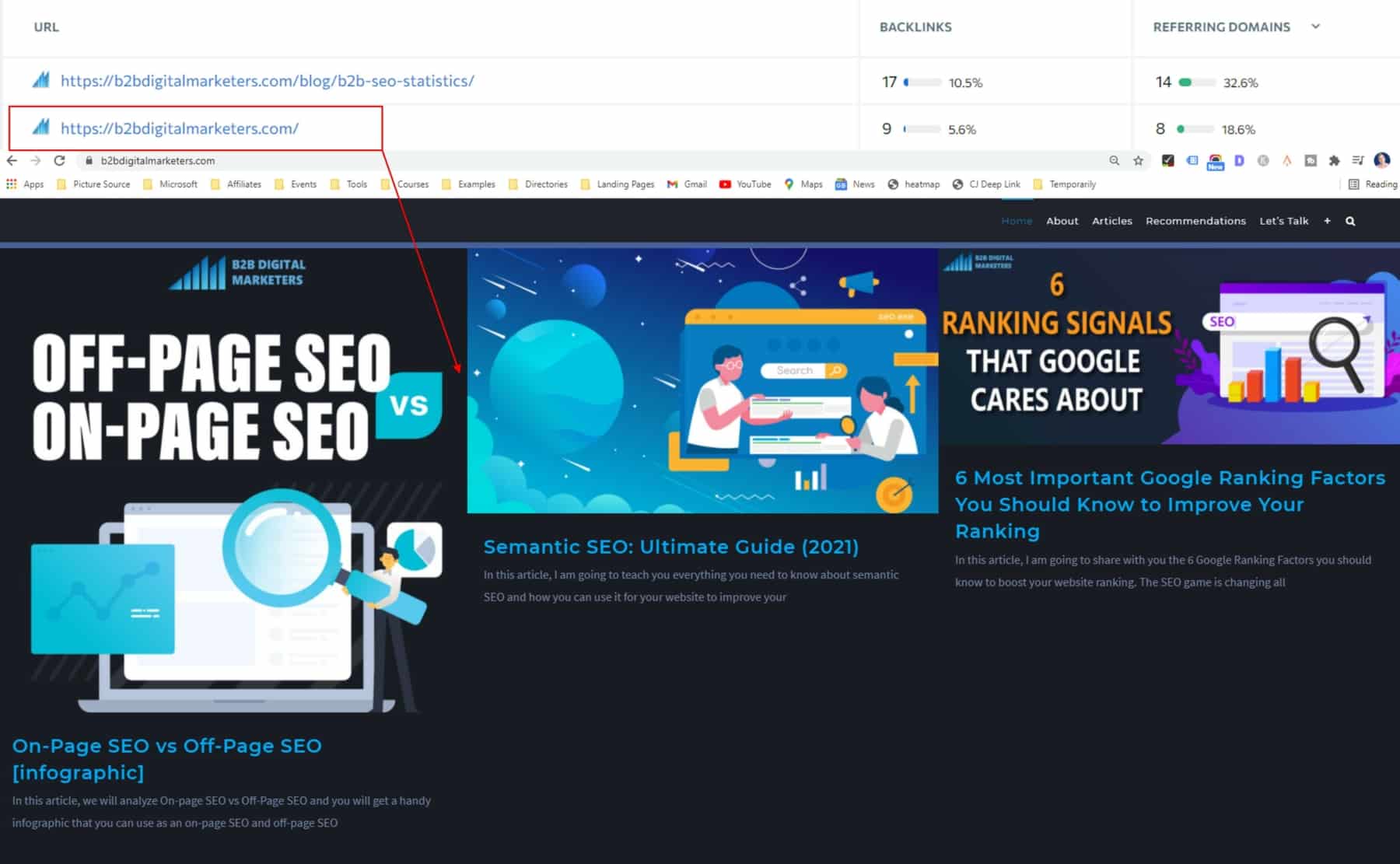
And as recommended by John Mueller to speed things up when you want to get your content index quicker is to:
- Make new internal links prominent
- Avoid unnecessary URLs on your site
- Add internal links from your homepage

The next very important part of your technical SEO and content is to include breadcrumbs on your website.
Breadcrumbs are similar to your navigational menu, but they are showing you the path to the content. This is an excellent way to show users and search engines how your content is related and where to go to learn more about it.
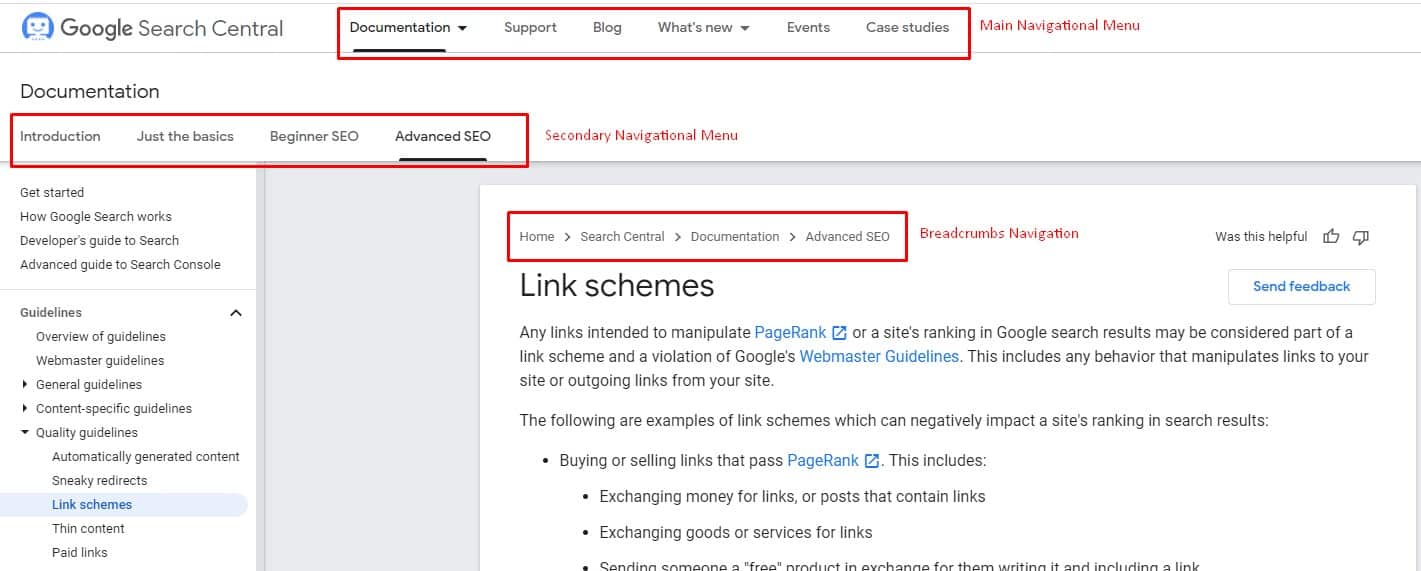
And you can also see breadcrumbs in search engine results pages to give you extra information about the content to determine if that’s something you are looking for.

Therefore, implementing breadcrumbs will help to boost your SEO and user experience and you should include them, wherever it makes sense.
Use Words in URL Structure
The next important part to improve your technical SEO, user experience and overall understanding of your content is to use words in your URL structure and keep it simple.

As you can see, I am using my targeted keyword in my URL structure which makes it super easy for Google to understand what my content is about and what keyword I am targeting.
And to make it even easier for Google I could use categories in my URL. For example, let’s say I am owning an e-commerce store and selling different types of sportswear.

So, by using a logical URL structure I can give more information to users and search engines about my content, and search engines can index it accordingly.
What I want to avoid is using unnecessarily high numbers or letters, undescriptive URLs that don’t make sense, and even long URL names that copy the article headline. Learn more about SEO headlines.

Add Structured Data
Another and very important part of technical SEO and to help search engines better understand your content is using structured data.
Structured data is a way to provide information to search engines about a page in standardizing form, so they can better understand it and display it in search engine result pages (SERPs) and in some cases as a rich snippet.
A great example is the Recipe rich snippet. As you can see, just within the SERPs you get the most important information about the recipe such as the overall rating and from how many reviews, cooking time, ingredients, and picture or video of the dish.

And this is just one example of using structured data. However, Google is using structured data to understand your content on the page and display it in various forms such as for articles, books, carousels, courses, events, FAQs, and more.

And implementing appropriate structured data for your pages can increase the search visibility, CTR, thus, organic traffic, and improve the overall ranking of your website.
Therefore, strategically including structured data for your web pages is super important to consider for each and individual web page.
So, these are some of the most important ways to use technical SEO to help search engines better understand your website and its pages. Now, let’s move to the content inventory.
Step #5: Manage Your Content Inventory
At first, when you start producing content on your website you will not have any issues with your content inventory on your website.
However, as time passes by, you do more research, targeting more keywords, producing and publishing more content, your content inventory will get bigger which can bring some issues.
So here, we will discuss some of the biggest issues with content inventory and how you can fix them.
Remove Duplicated Content
The first and one of the most common issues with content inventory is duplicated content on your or other websites.
The problem with duplicated content is that search engines have a hard time determining which version of the content available should be index in SERPs. Especially if the content appears on two different sites.
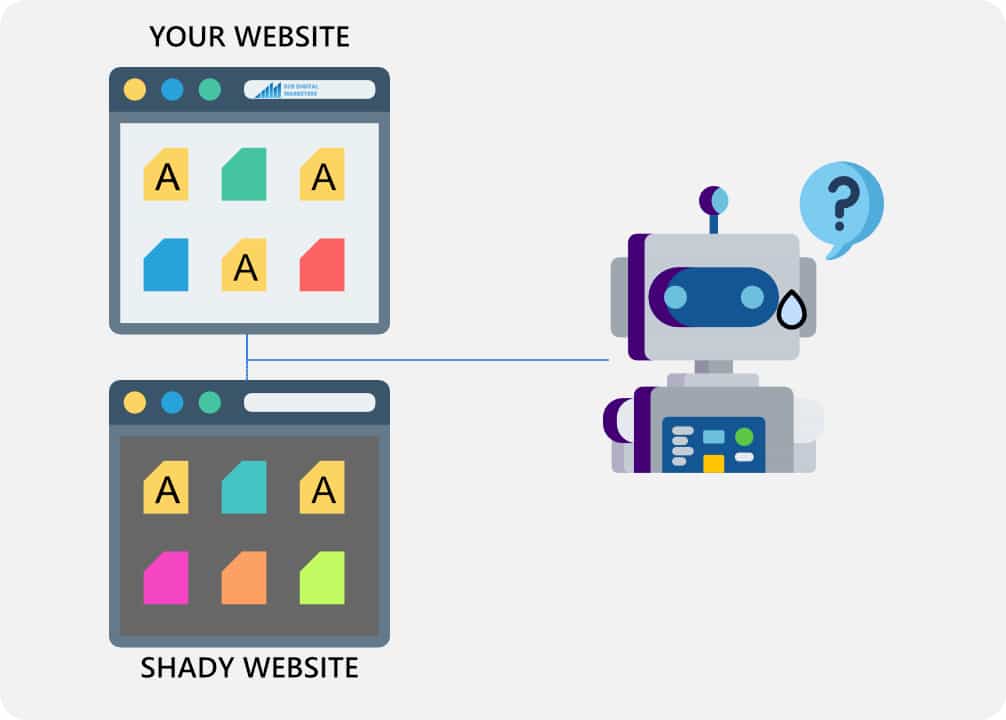
So, what can happen is that search engines can display the wrong version on your website or in the worst-case scenario show the content on another site and deindex your content on your website.
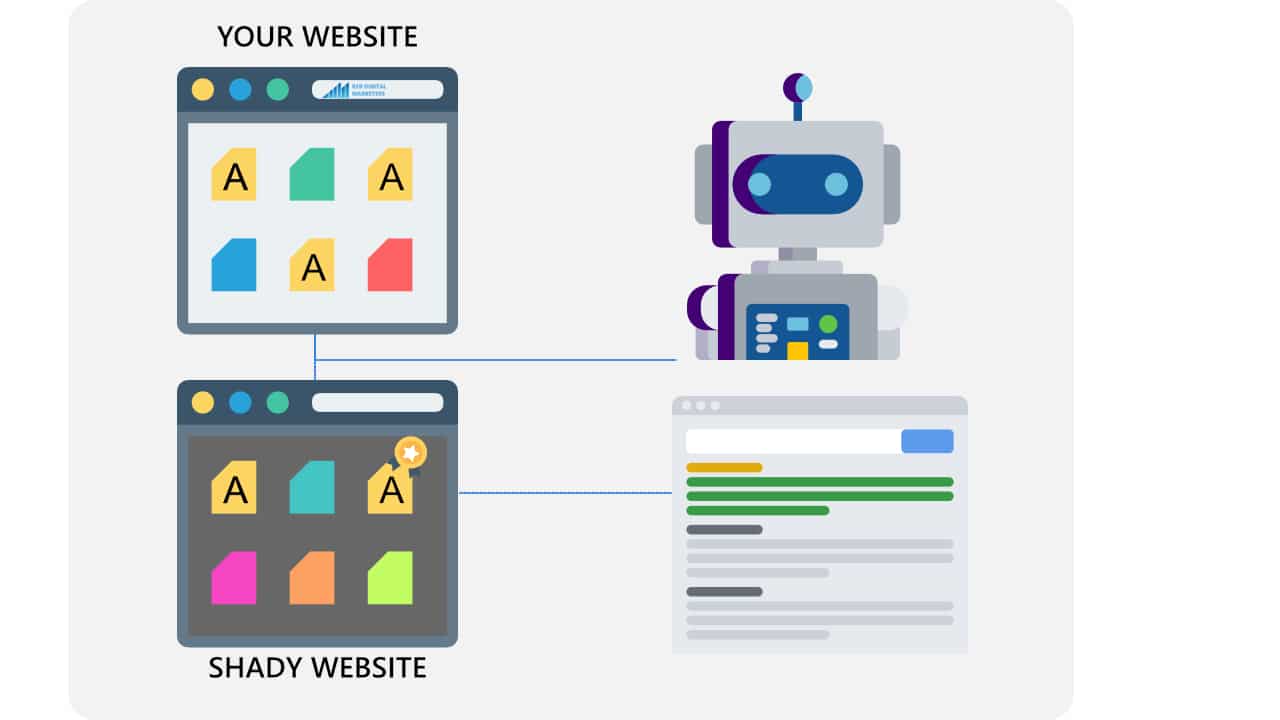
With that in mind, to find duplicated content on your website you can use SEO tools like SE Ranking Website Audit and let scan your website.
Along with other technical aspects site audit tools helps you to check, they also analyze your website for any duplicated content and issues associated with it and they help you to fix it.

Once you find such content, then you can set the page as “Noindex” if you are using an SEO plugin like Rank Math and search engines will know that does not display this version.
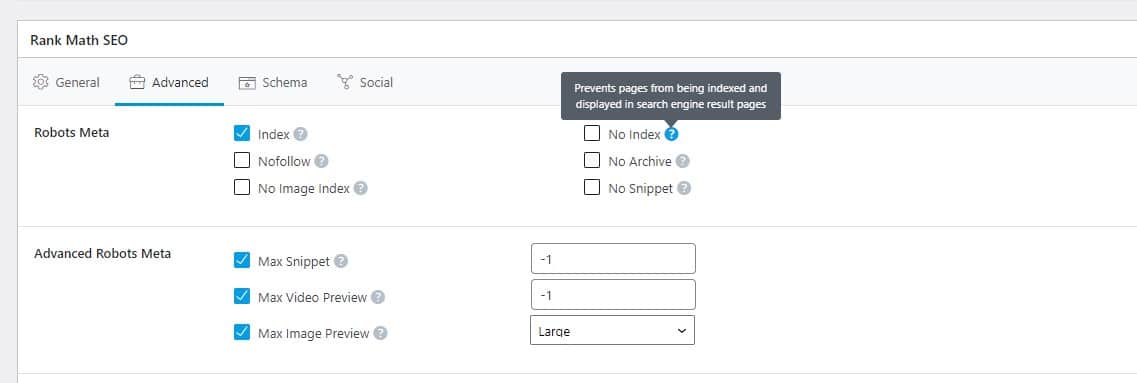
And to discover duplicated outside of your website you can use SE Ranking On-Page SEO checker. Just pop one of your web pages and you will get a ton of important information about your on-page SEO and technical SEO as well as about duplicated content on the internet.

Then, if you find such content or a snippet of text that is copied from your website, search for that text in Google using quotes.
And If your page ranks first in the SERP, then you are considered as the original author of that content.
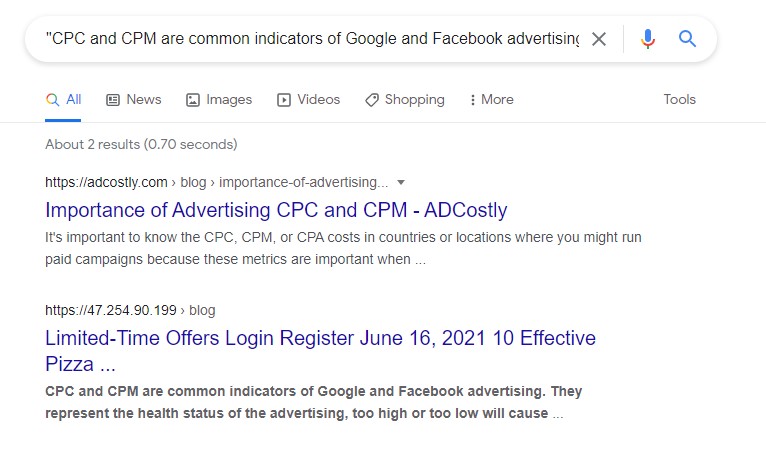
Remove Thin Content
Another type of content that can appear in your inventory is thin content.
As the name suggests, thin content is a page with very little to no value often with only a couple of hundreds of words. Such pages have little to no chance to rank in Google search results as Google wants to rank only web pages that contain plenty of rich information that includes relevant keywords.
Therefore, you should be removing Thin Content pages on your website before Google takes action against your pages or the entire website.
To learn more, I recommend you check out this video from Google Search Console.
Implement Canonical URL
In some cases, you cannot delete duplicated content on your website as they could be important versions for your users, therefore another option to deal with duplicated content is to implement a canonical URL.
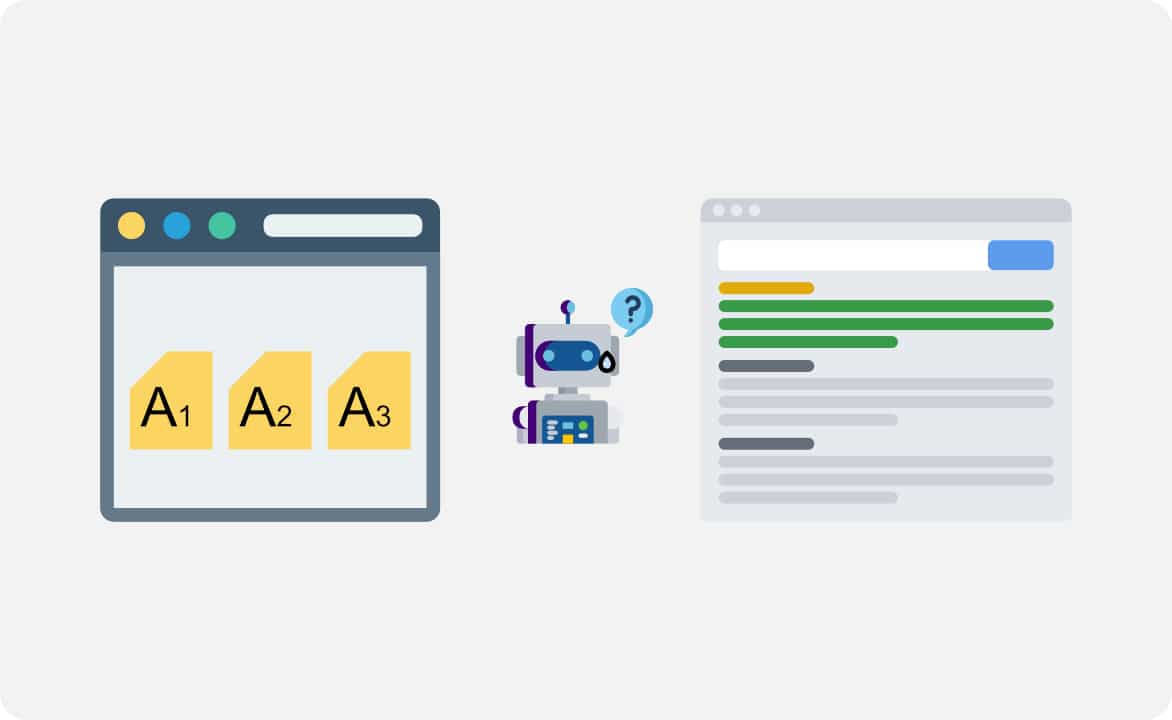
Canonical tag helps you to mark the important version of your web page as the main version of the content that you want search engines to display in search engine result pages.
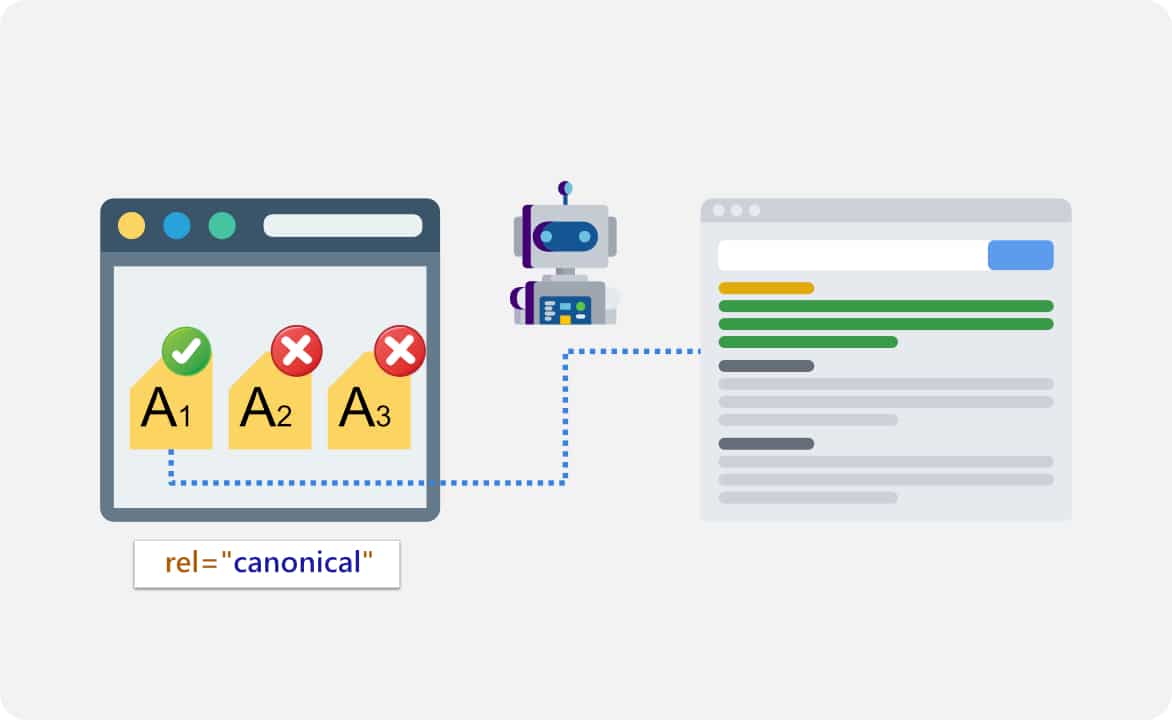
For example, if you own an e-commerce store with products that have a lot of variants such as a t-shirt with different colors, where the content is the same and only the color in text differs, then choosing canonical for the main color will help search engines to rank your content.

This will help you to let Google and other search engines know that the blue t-shirt is the main color and the others are only variants, thus, you can remove any keyword cannibalization and improve your page ranking.
And to set canonical URL in WordPress you can use an SEO plugin as well.
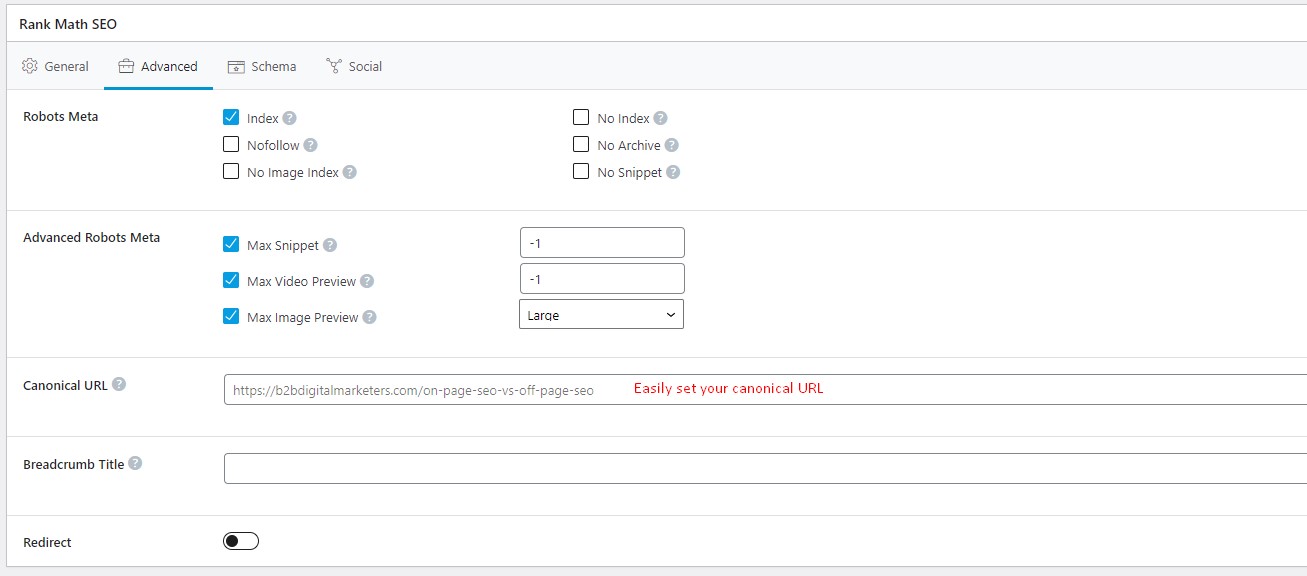
Implement hreflang tag for localized pages
Another way to manage your content inventory and remove any duplicated content is to implement a hreflang tag for your pages.
Hreflang tag helps you to determine the language and geographical targeting of a web page if you have multiple versions of the same page in different languages so search engines can serve the correct version to their users based on their location and language preferences.

So, if UK users land by chance on the US product page then they can be redirected or give a choice to move to the UK product page if they prefer to see the pricing in their currency.
Of course, there are more examples of how you can use hreflang tag for your website, and most likely you could see this on large international sites like Apple or Amazon for their products offered in several countries.
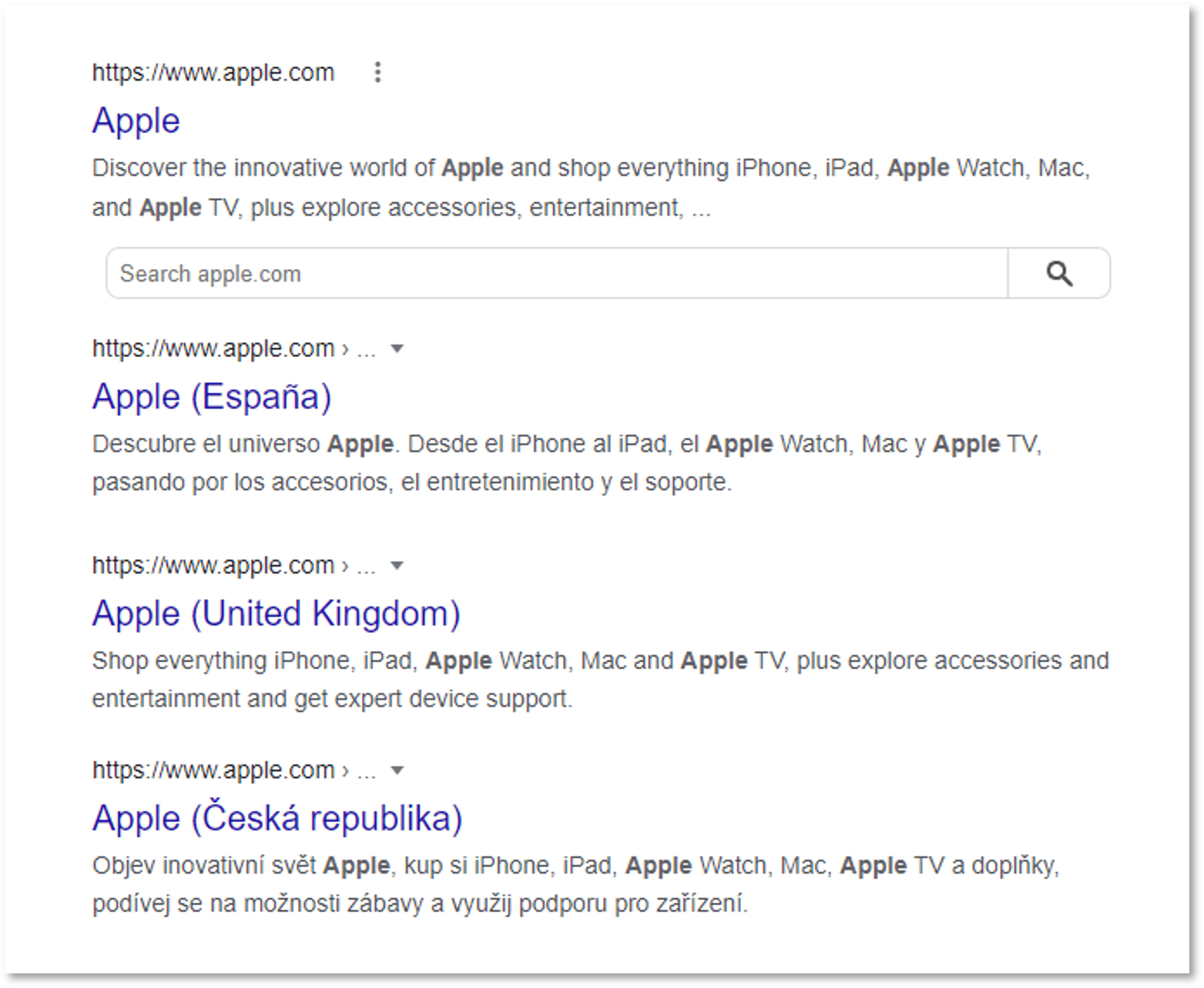
Use 301 Redirects
By now you might delete a lot of pages on your website causing the 404 HTTP error status code, so to fix it, you can use 301 redirects.
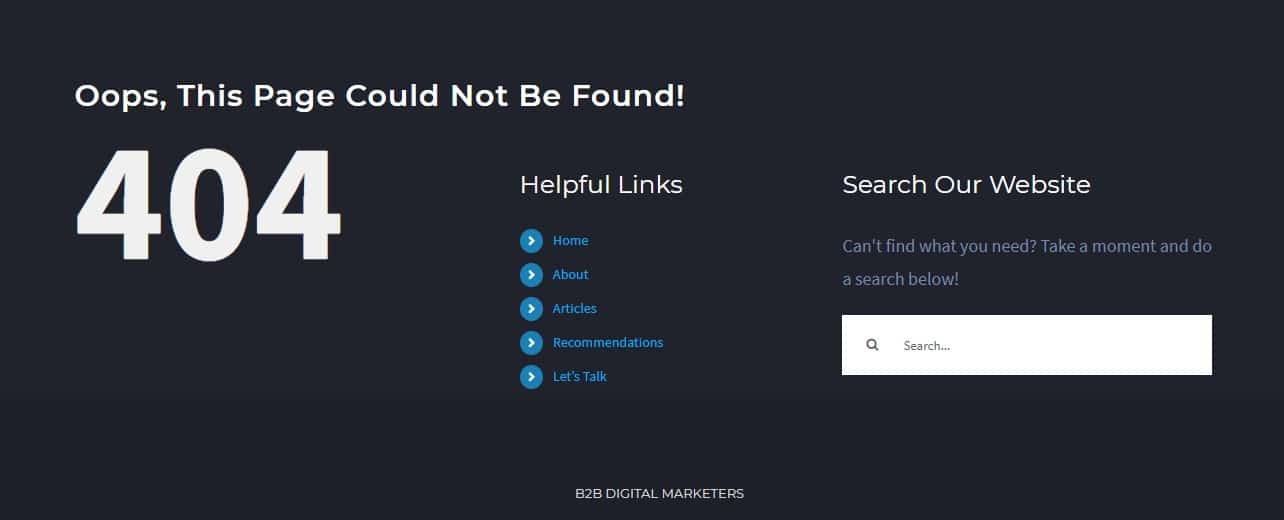
301 redirect is an SEO-friendly way to tell search engines that one of your old pages has moved to a new destination and you would like to redirect all traffic that the old page receives to the new page.
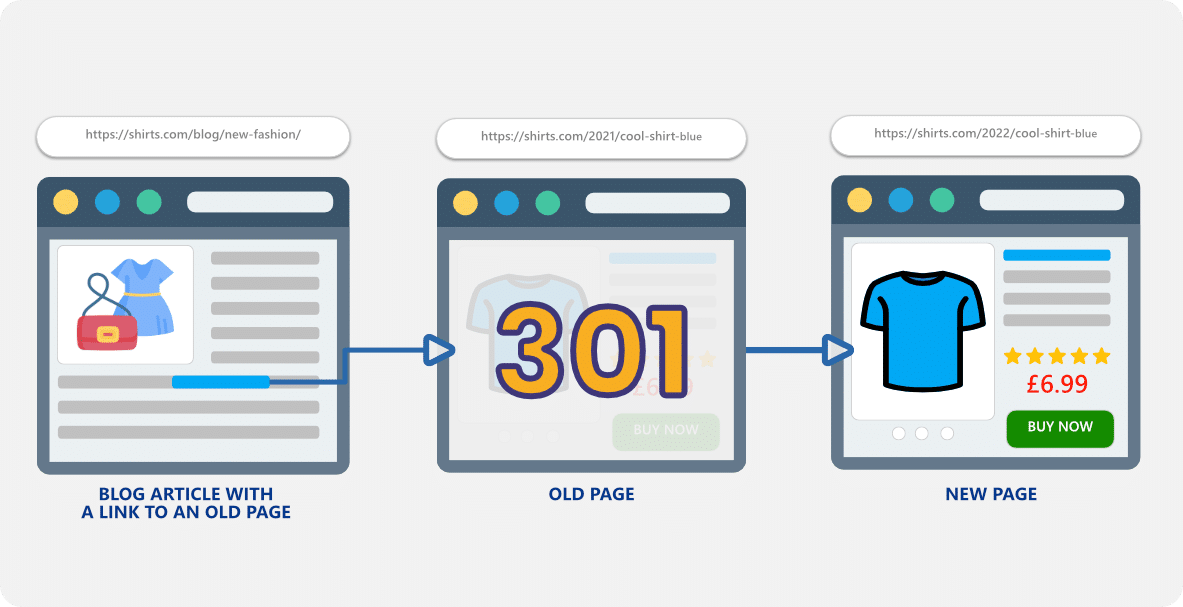
It is important that all your deleted pages are properly redirected into a new page so you don’t lose out on traffic and in some cases on PageRank.
Because if your old page had a lot of backlinks from other domains, then all the link juice goes into a 404 page that does not distribute the link juice to your important pages. And what’s worse, then somebody will perform a broken link building on this page and steal all your hard earn backlinks causing you to lose ranking and even more organic traffic.
Therefore, it is extremely important to monitor 404 HTTP status codes on your website. You can use an SEO tool like SE Ranking that tells you all internal and external 404 HTTP status codes.

Also, Rank Math will monitor 404 on your website when anybody visits a broken page on your website through an internal or external link and then show you a report of all those broken pages and how many times they were visited.

Then you can easily set up 301 redirects for the broken page and Rank Math will do all the heavy lifting for you.
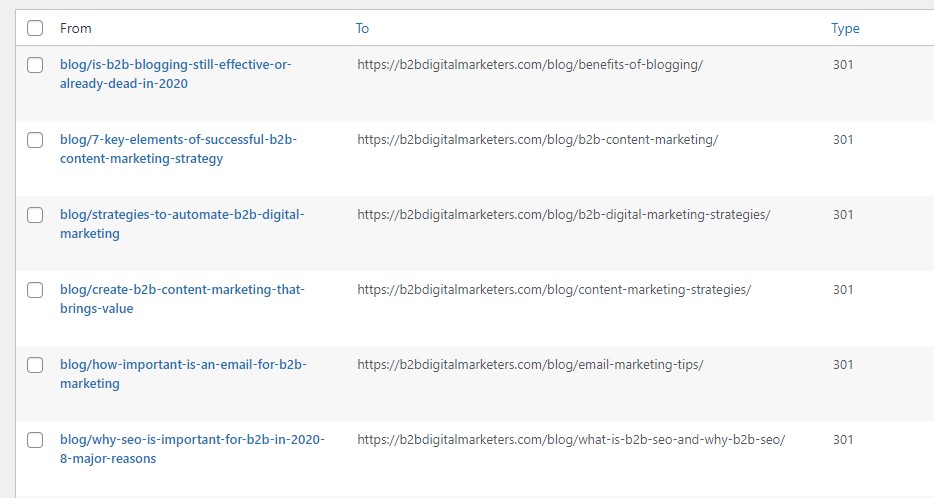
Monitoring your website content inventory is one of the most important SEO aspects and where often website owners and marketers struggle the most.
Therefore, the larger the content inventory you have the more often you should do the audit for your content inventory for your website to avoid any keyword cannibalization, broken pages, or duplicated content. All these are serious issues that can hurt your ranking and traffic.
Final Advice
Doing technical SEO doesn’t mean you need to be a technical person who knows how to code, developing and programming websites. Luckily, today there are some amazing tools to help you get started even with minimum technical knowledge that you can easily gain.
However, even with that it still might be hard to learn the fine balance between all these SEO aspects and when you should apply them, and when to remove them.
Therefore you should always experiment and try to figure out what is the best technical SEO ratio with other important SEO elements.
For example, sometimes sacrificing a bit of page speed for better content with more media provides more value to a user than a faster-loading website with just a bunch of text.
So experiment, and find what’s working for you the best.
Related Articles:
- Ultimate SEO Checklist That Actually Works in 2021
- Off-Page SEO: Learn Everything You Need to Get Started in 2021
- Semantic SEO: Ultimate Guide (2021)
- [Step-By-Step] Best 3 Link Building Strategies for SEO Beginners in 2021
- Keyword Research for SEO: 6 Steps Guide for Beginners to Boost Ranking
- Effective SEO Audit to Generate Organic Traffic and Leads for Your Business in 2021
Also, check out our SEO hub page to find all our SEO resources.
Disclaimer
Some pictures are coming from Freepik and some of my links are affiliate links, which means if you purchase something, I might get some small commission as a reward for reference. Of course, I am actively using all these services and products, and I only affiliate products or services I have full trust in their quality!
Support the B2BDigitalMarketers
Hey, Eduard here.
As a solo blogger with limited resources, I need your support to keep creating in-depth SEO content like this. Please consider joining my Patreon community to help this site grow.
Your pledge – no matter how small – will enable me to dedicate more time to sharing actionable tips and strategies. With your help, I can take this project to the next level and really make a difference for other SEOs and marketers.
I would sincerely appreciate you joining me on this journey as a founding patron. Together, we can build an amazing resource hub. Hope to see you on the inside – thanks for your trust and support!








